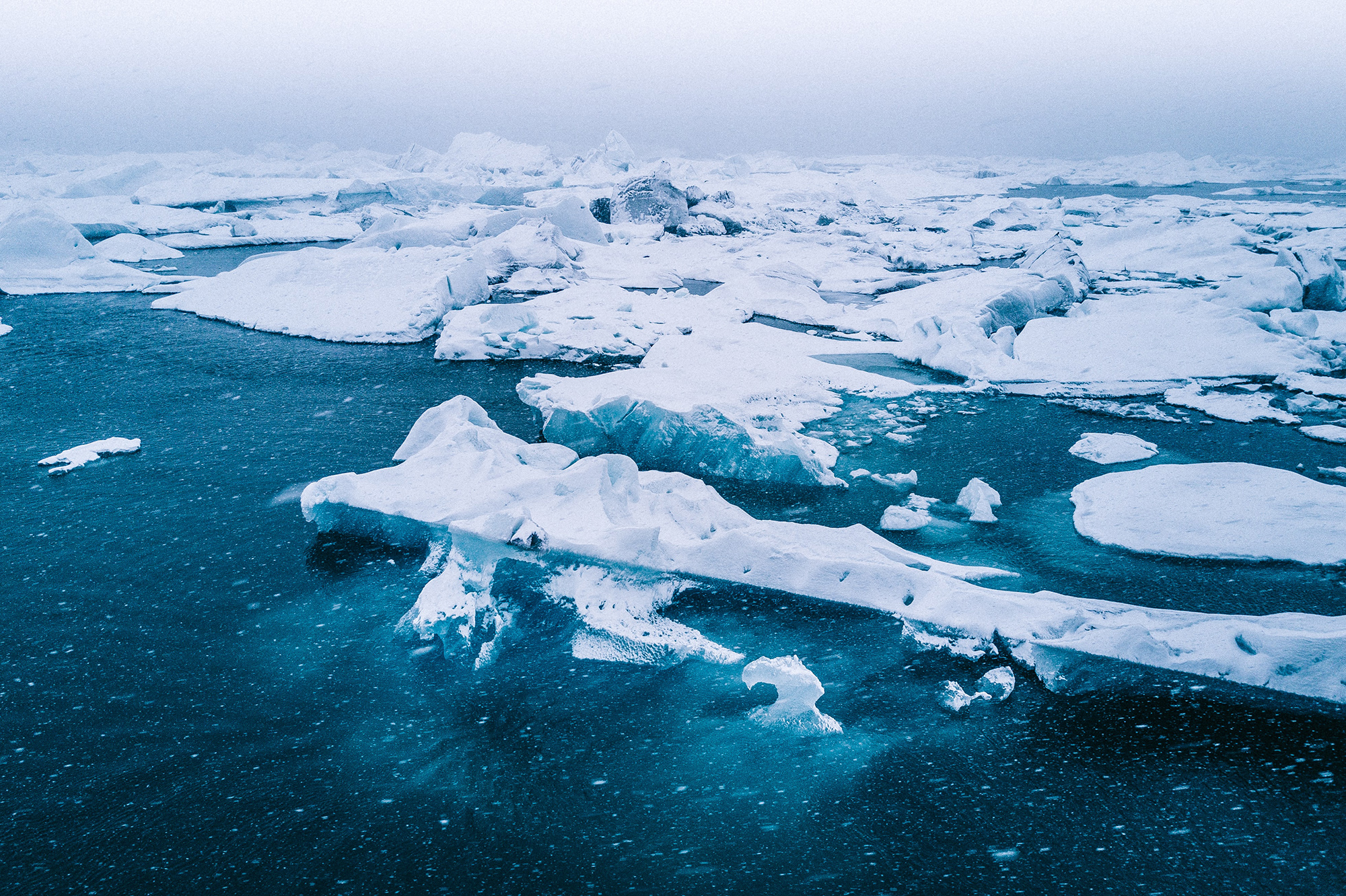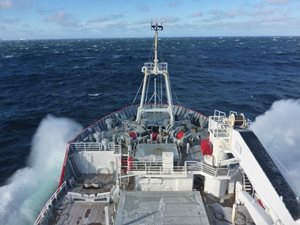Story
Emissions of unexpected gases from marine life affect the air and climate over the poles
1 February 2023
A new study reveals that trace atmospheric gases thought to be pollutants are also produced by marine plankton and emitted by the ocean, with potential climatic effects.

Polar waters. Willian Justen de Vasconcellos | Unsplash
The air we breathe is much more than oxygen and nitrogen, even more than greenhouse gases like carbon dioxide. It also contains small amounts of many of organic gases, like benzene and toluene. These atmospheric compounds are important because they oxidize into little particles, called aerosols, that seed water condensation into droplets to form the clouds that filter solar radiation. Mathematical models of climate underestimate the amount of clouds, particularly in the Southern Ocean, and thus carry large uncertainties in climate projections.
The study, published in the journal Science Advances and co-led by the Institut de Ciències del Mar (ICM-CSIC) and Plymouth Marine Laboratory (PML) with the Instituto de Química Física Rocasolano (IQFR-CSIC), reports the first measurements of benzene and toluene in the polar oceans. It indicates that these compounds have a biological origin and until now, the occurrence of these compounds in polar marine air was thought to be a sign of the far-reaching spread of human pollution from coal and oil burning as well as the use of solvents.
"If we don't get the clouds right, we won't get the climate right," says Dr Charel Wohl, of ICM-CSIC and PML affiliated researcher, who was the lead author of the study, adds that "we just begin to unveil the multiple ingredients that form cloud seeds”.
 The breath of the sea in the pre-industrial times
The breath of the sea in the pre-industrial timesThe only way to investigate how the composition of the atmosphere was regulated before the profound impacts of human activities in the industrial era is to study the regions of today’s cleanest air. The authors took measurements of benzene and toluene in the surface seawater and the overlying air during two oceanographic expeditions: one in the Arctic and one in the Southern Ocean. The distribution of these gases, their relationship to the amount of phytoplankton, and the fact that the ocean was constantly emitting them into the air, instead of capturing them from the air, led the researchers to the conclusion that they had a biological origin.
By incorporating the data into a global model of atmospheric chemistry and climate, the results showed that ocean-borne benzene and toluene were significant contributors to aerosol production. This is particularly in the extremely clean, non-polluted atmosphere over the Southern Ocean, where these two gases increased the mass of organic aerosols by 8%, even up to 80% in transient events. Most likely, the natural effect of marine benzene and toluene on atmospheric chemistry was a globally widespread phenomenon before the Industrial Revolution and is now masked by the widespread impact of pollution.
“This is a great serendipitous finding as we were initially monitoring these gases to confirm that our samples were uncontaminated – they seem to play a more important and interesting role than we initially suspected” says Dr Mingxi Yang, Chemical Oceanographer at PML.
Furthermore, “climate models will have to consider the emissions of benzene and toluene from the oceans if they want to get clouds right in climate projections towards both the past and future”, affirms Dr Alfonso Saiz-López of the IQFR-CSIC, who was responsible for the atmospheric modeling part.
Another co-author of the study, ICM-CSIC researcher Dr Rafel Simó, adds that “this is another example of how millions of years of evolution have shaped the interactions between the ocean and the atmosphere in such a way that ocean life has not only adapted to climate but has contributed to regulate it”.
In two weeks, the research team will travel back to Antarctic waters again to confirm the finding and continue the study of the impact of plankton in the atmosphere.
Based on an article by R. Simó, Institut de Ciències del Mar (ICM-CSIC).
Related information
Full paper: Marine biogenic emissions of benzene and toluene and their contribution to secondary organic aerosols over the polar oceans